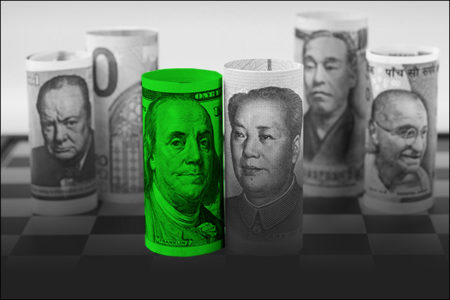
We sometimes start our quarterly letter to you with the smaller, local items and move to the larger, macro ones. However, the US share of world market capitalization is a macro item that has pushed its way to the front.[1] After running at approximately 60% for most of the post-World War II years, the situation changed in the early eighties when valuations for Japanese companies overtook US companies, with Japanese companies accounting for 35% of world market cap, compared to 25% for US companies. Sir John Templeton explained his nervousness about the situation by worrying that if one square mile of Tokyo real estate was worth more than the whole state of California, such valuations were not sustainable. By the year 2000 and the US tech bubble, the US share had climbed up to 50 percent. The bursting of the bubble and interest in emerging country stocks drove the US share down to 40% by 2008.
Since then, the US share of world market cap has climbed back to 50 percent. The next 20% is shared by Japan, the United Kingdom, France, and Germany in approximately equal weights. China, India and Russia hardly register in the rest of the world’s remaining 30 percent. Some explanations could credit US advantages and entrepreneurial spirit for this remarkable 80-year run. Others could focus on Chinese government entities being more important than Chinese private sector ones in terms of understanding China’s importance in this statistic. But instead, the focus should probably be on what is wrong with the rest of the world. If human capital is the real natural resource, the US is one-third the size of China and equivalent to the European Union. Rather than focus on what we’re doing right, perhaps, the focus should be on what they’re doing wrong.
As referenced above, after 2000 the institutional investment focus turned to the endowment model and investing in asset classes such as emerging market equities, hedge funds, commodities, real estate and private equity. One of the leaders in this movement was the California Public Employees’ Retirement System (CalPERS). The new system seemed to work pretty well from 2000 to 2010, but for the last decade institutions have tried various tweaks to the endowment model to attempt to generate at least a reasonable return compared to the US S&P 500 benchmark return, which has been spectacular. In June 2020, the new chief investment officer for CalPERS announced the latest iteration.[2] The two-pronged approach that he outlined will focus on “better assets” and “more assets.”
“Better assets” mean private equities, which are described as having the potential for higher returns and lower volatility than publicly traded assets. As we’ve discussed before in these pages, there is too much money chasing too few good private equity deals. Since they rarely trade, volatility is low, but as we’ve also discussed, volatility doesn’t equal risk. The trading that does occur tends to be between private equity investors themselves for those companies that will never go public, thus sheltering their real valuations from public view.
“More assets” refers to the use of leverage, or borrowing against the assets to increase returns. The best comment on this aspect of the new CalPERS strategy came in a letter to the WSJ editor a week later: “Leverage in a public pension plan? What could possibly go wrong?”[3]
So here we sit. The whole rest of the world hasn’t been able to get out of its own way for 80 years. New investment thinking in the US “rolls the dice for the next ten years,”[4] another letter to the WSJ editor commented.
There is a perfectly good investment system that has doubled its investment dollars over the last seven years and may double again over the next decade, provided all this “smart money” never figures it out. We’re there and you’re there. Let’s enjoy the ride.
We know that you are the most valuable business development tool that we have. Your referral of a friend, colleague or family member to us is the most important way that we grow.
We thank you for your support and want you to know that we are dedicated to serving your best interest.
William H. Darling, Chairman & CEO
Adrian G. Davies, President
